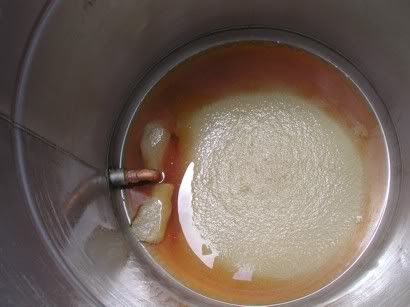boo boo
Well-Known Member
Monster Mash vbmenu_register("postmenu_165250", true);
Senior Member
Join Date: Apr 2006
Location: Castaic, CA
Posts: 248

To get the best utilization just throw them in the boil, if you don't want to hassle trying to keep them out of the fermenter use a bag.
I just throw them in and deal with them later.
I put screens on my pickup tube to filter and I whirlpool to get them in the center.

__________________
Brewery Pics:
http://pg.photos.yahoo.com/ph/brewer007/my_photos
That is a nice cone of break material there MM. My break material don't seem to adhere to each other to be able to form a cone like that. Rather it just settles to the bottom and I find I waste too much beer keeping the trub out of my fermenter.
Any hints you can pass along to me and the brotherhood to be able to get a nice break like this?
Senior Member
Join Date: Apr 2006
Location: Castaic, CA
Posts: 248
To get the best utilization just throw them in the boil, if you don't want to hassle trying to keep them out of the fermenter use a bag.
I just throw them in and deal with them later.
I put screens on my pickup tube to filter and I whirlpool to get them in the center.

__________________
Brewery Pics:
http://pg.photos.yahoo.com/ph/brewer007/my_photos
That is a nice cone of break material there MM. My break material don't seem to adhere to each other to be able to form a cone like that. Rather it just settles to the bottom and I find I waste too much beer keeping the trub out of my fermenter.
Any hints you can pass along to me and the brotherhood to be able to get a nice break like this?



